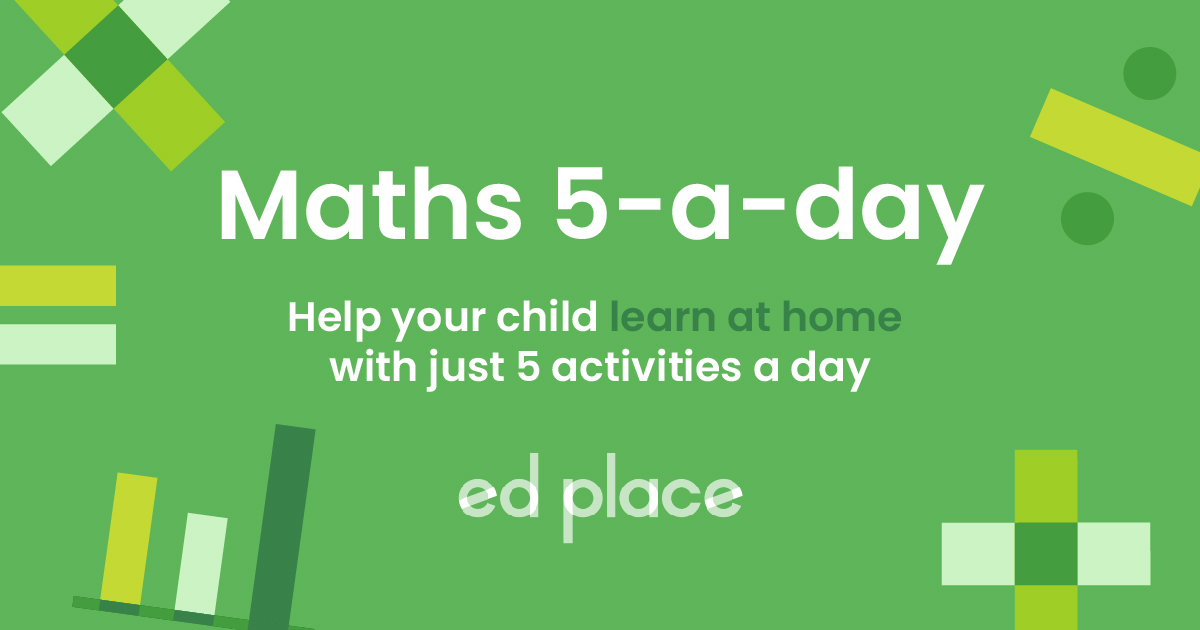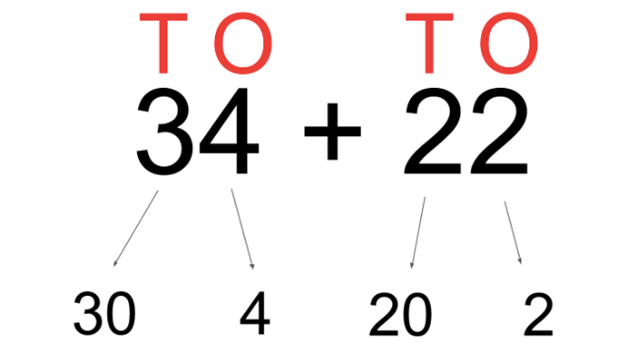
EdPlace's Year 2 Home Learning Maths Lesson: Addition By Partitioning
Looking for short lessons to keep your child engaged and learning? Our experienced team of teachers have created English, maths and science lessons for the home, so your child can learn no matter where they are. And, as all activities are self-marked, you really can encourage your child to be an independent learner.
Get them started on the lesson below and then jump into our teacher-created activities to practice what they've learnt. We've recommended five to ensure they feel secure in their knowledge - 5-a-day helps keeps the learning loss at bay (or so we think!).
Are they keen to start practising straight away? Head to the bottom of the page to find the activities.
Now...onto the lesson!
What is being asked of your child?
Feel like you need to go back to school yourself when trying to home school? Want to understand what addition by partitioning means? You will probably find that how your child learns in school today is different from how you learnt. The way maths is taught now, particularly in the earlier years, focuses on building the foundations of understanding numbers. This foundation includes understanding that when you add together, for example, 26 + 21, your child does not think they are just adding 2 + 2 and then 6 + 1. Methods such as partitioning will help them understand they are adding 20 + 20 and then 6 + 1.
Follow the step-by-step guide below to clarify how to solve number sentences with your child. By the end of this article we're confident that your child will be able to:
1) Understand the partitioning method
2) Apply this understanding to add two two-digit numbers
3) Explain it back to you at the end, if they've really cracked it!
Step 1: Key terminology
Before we get going, it's crucial to check your child understands some important language we will use to complete our lesson objectives. These words form the foundations for all maths skills, so mastering these definitions early on, will help your child to make progress!
Partition: to split numbers into parts – in this case, we are splitting the numbers into tens and ones.
Digit: numerals 0-9.
Tens and Ones: (they used to be called units) for example, 32 - the 3 in 32 is in the tens column and therefore is worth 30 and not 3. The 2 is in the ones column and is therefore worth 2.
Step 2: How to partition numbers into tens and ones
To tackle this lesson, your child will need a sound understanding of the following key concepts. First, your child needs to be able to partition numbers into tens and ones. Writing a T (for tens) and an O (for ones) over each number can help the children to see what each digit is worth.

Then, they can see with 34 the 3 is worth 3 tens, or 30. The 4 is worth 4 ones, or 4.
With the 22 the 2 is worth 2 tens, or 20. The second 2 is worth 2 ones, or 2.
Step 3: Tens, ones, total
Once your child has partitioned the numbers, we then group them together to help students add them up in the easiest way. You can use TOT to help you remember, which stands for Tens, Ones, Total. First, we take the tens numbers and add them up. Then, you take the ones numbers and add them up. Now, your child can easily find the total by adding the total of the tens and ones together, as shown below:
Tens: 30 + 20 = 50
Ones: 4 + 2 = 6
Total: 50 + 6 = 56
Therefore, our final answer is 34 + 22 = 56.
Step 4 - Put it into practice...
Can your child apply the method above to answer the addition questions below?
a) 53 + 25 =
b) 22 + 74 =
c) 25 + 36 =
d) 91 + 23 =
Step 5 - Activity time!
Great effort covering all this together! Now, why not challenge your child further by assigning the following 5 activities in this order?
All activities are created by teachers and automatically marked. Plus, with an EdPlace subscription, we can automatically progress your child at a level that's right for them. Sending you progress reports along the way so you can track and measure progress, together - brilliant!
Activity 1 - Know Your Addition: Adding Two Numbers (1)
Activity 2 - Adding in Any Order
Activity 3 - Know Your Numbers: Tens and Ones (10-19)
Activity 4 - Know Your Numbers: Tens and Ones (11-19)
Activity 5 - Know Your Numbers: Tens and Ones (20-39)
Answers
a) 78
b) 96
c) 61
d) 114
Keep going! Looking for more activities, different subjects or year groups?
Click the button below to view the EdPlace English, maths, science and 11+ activity library









